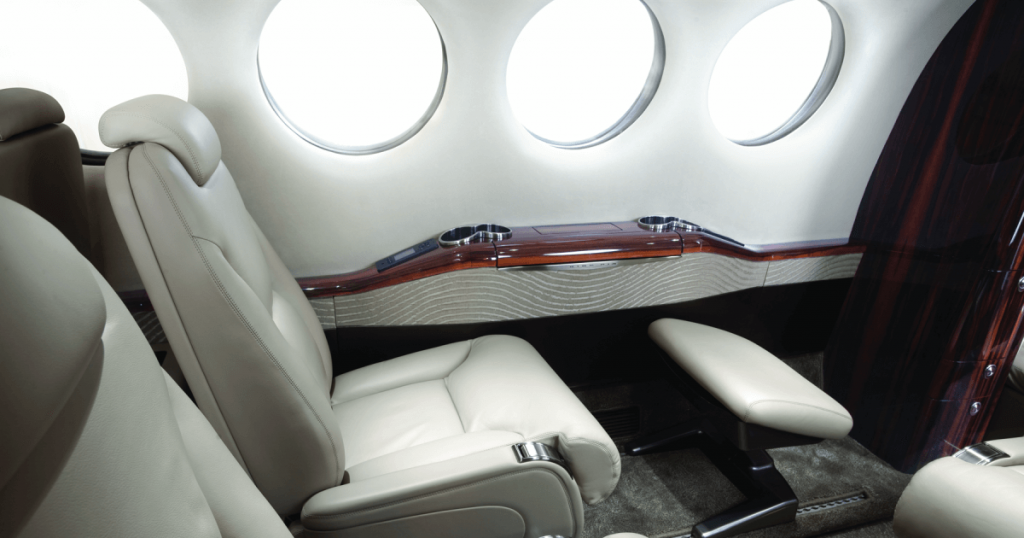Switch to:
 EN
EN  Português (PT)
Português (PT)  Español (ES)
Español (ES)
Whether for a family trip or a business mission, the decision to choose the most suitable model from the King Air family does not seem easy, especially considering the excellent performance of almost all its variants. Known as the most sought after turboprop in business aviation, King Air planes are recognized for their iconic design, high safety records, and versatility. And although similar in terms of speed and landing capabilities, King Air has numerous differences in operating costs and capacity, which can eventually affect your final decision. Want to learn more about the King Air 250 and King Air 350? Check out this article that Flapper prepared.
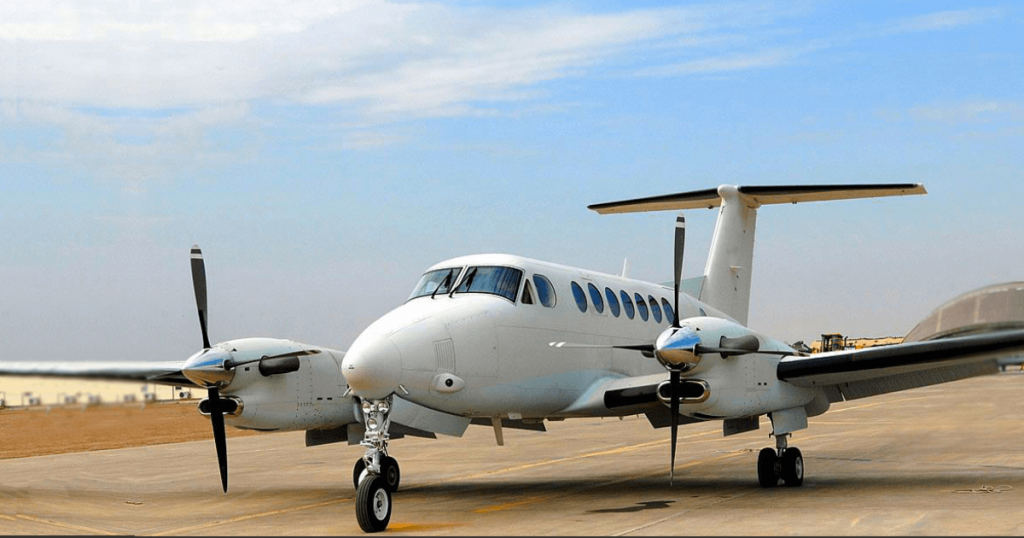
King Air 350 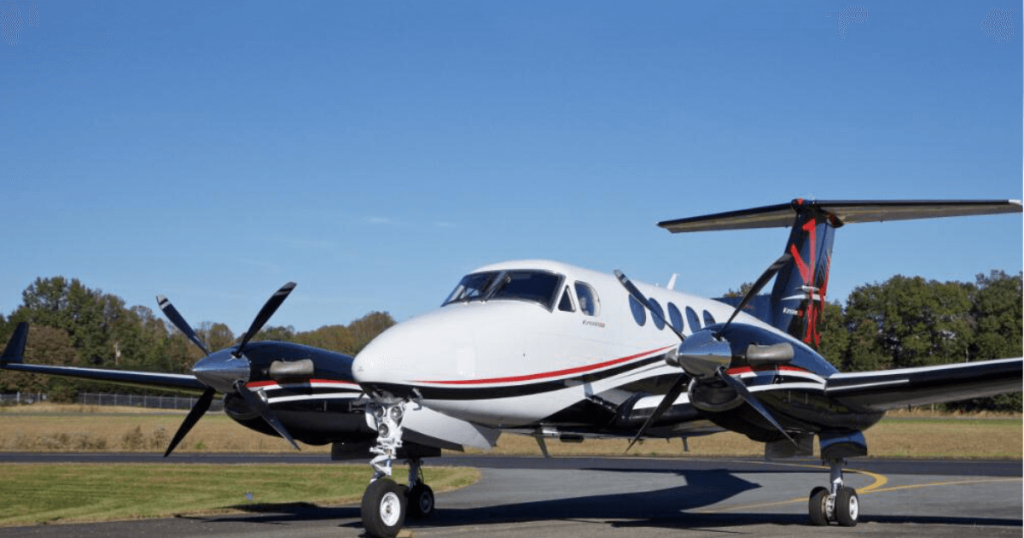
King Air 250
Made in the United States from the 1960s by Beech Aircraft (now Textron), King Air is an evolution of the twin-engine piston project called Queen Air. According to experts, one of the main reasons for the success of this aircraft family is the result of its combination of several characteristics, such as the fuselage design and landing gear with shock absorbers, for example.
Both the King Air 250 and the 350 – currently two of the most popular models in the King Air family – have a similarity that facilitates the choice for one of these aircraft: the ability to land on short runways – such as those in Angra dos Reis (Brazil) or St. Barts (Caribbean), for example , which also need not be paved, be it earth or grass.
Want to know more about the King Air 250 and 350? Read more below.
King Air 250
With a flight range of up to six hours and a cruising speed of 530 km / h (286 kts), the King Air 250 has the capacity to comfortably accommodate up to seven passengers. The cabin has retractable tables, as well as small galleys on board for chilled drinks. With an elegant interior, the aircraft has air conditioning and 110VAC sockets, a private toilet, and accessible luggage compartment during the flight.
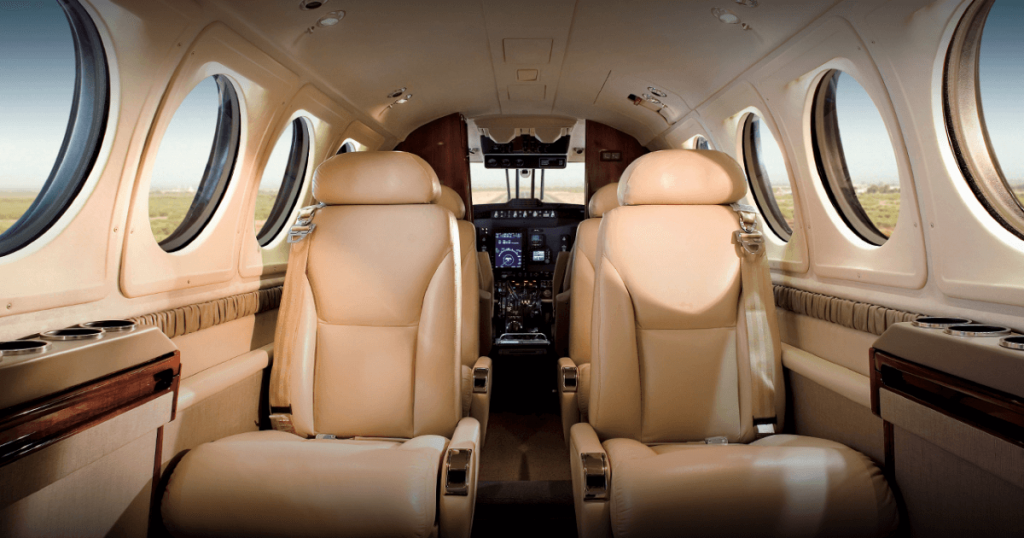
King Air interior 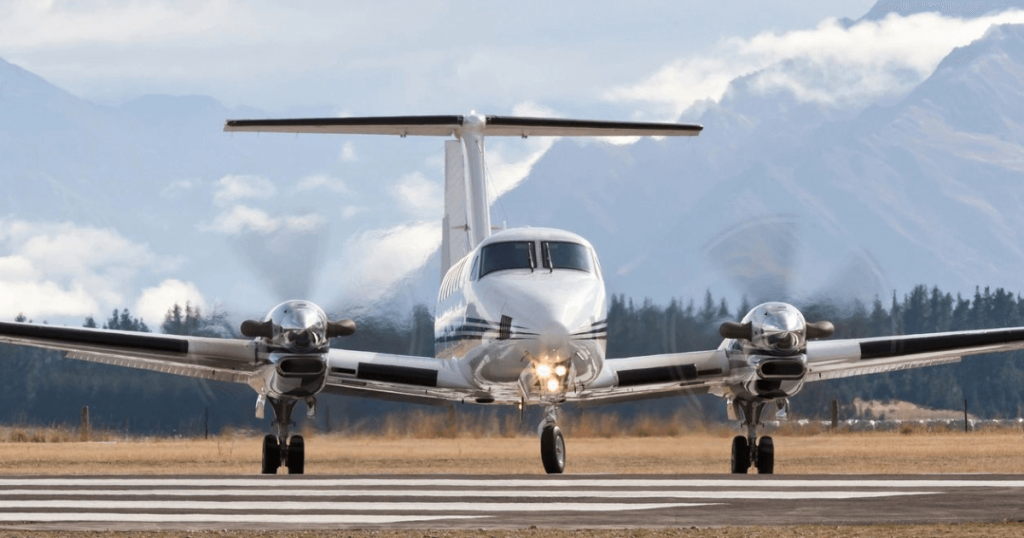
King Air 250
The aircraft’s pressurization technology allows flights above meteorological formations, providing more comfort to passengers. In addition, the King Air 250 has a PROLINE 21 navigation system, weather radar, and data monitoring that is completely digital.
UniAir aircraft maintenance technician Thales Silva says that one of the advantages of King Air family planes is safety:
“In addition to all the versatility, technology, and comfort that the aircraft offers, it is also extremely reliable. The King Air line is the safest in its category. If the passenger seeks to fly quickly and safely, it is a great choice ”, he says.
UniAir’s fleet of fixed-wing aircraft consists of King Air family aircraft, one of which is the KA250. With experience with this type of aircraft, Silva praises the safety of the King Air 250.
For Francisco Fuentes, Chilean pilot of King Air 250, the model is known for its attractive operating costs. Compared to the King Air 350, the King Air 250 has greater availability of spare parts and consumes much less fuel. In Latin America, specifically, the hourly cost of chartering a King Air 250 can be as low as $ 1,500 / h, while for King Air 350 the hourly rate often exceeds $ 2,500 / h – close to the rate offered by light jets .
King Air 350
It can be said that the King Air 350 is an evolution of the 250. This aircraft has a longer fuselage and has a “double club” configuration, with eight seats plus an approved toilet, which totals nine seats.
Similar to the newer versions of the King Air 250, the 350 winglets have been added to the wingtips to increase autonomy and performance.
The cruising speed of the King Air 350 is 580 km / h (313 kts) and its maximum flight range is 2870 kilometers (1550 NM). Taking off from São Paulo with 2 passengers, for example, the plane can reach Santa Cruz de la Sierra, in Bolivia. Like the KA 250, the aircraft is able to land on both short and uneven runways (earth, grass, or gravel).
For Paul Malicki, CEO of Flapper, the main reason why customers choose the King Air 350 over the King Air 250 is the combination of comfort and seating capacity. “The King Air 350 has a special layout for 8 passengers that allows each passenger to have access to a folding table, being able to conduct a more productive conversation during the flight, since the seats are positioned in front of each other. If you have to land on a short runway, needing to carry 8 passengers comfortably, the KA 350 should be your preferred option for such a mission“.
Conclusions
Similarities: state-of-the-art technology capable of providing a safe flight and the ability to land on short, unpaved runways, such as dirt, grass, and gravel.
Differences: seating capacity and operating costs.
Check out some of the main features of the King Air 250 and King Air 350 models:
| Items | King Air 250 | King Air 350 |
| Typical configuration | 6 seats + 1 | 8 seats + 1 |
| Cruising speed | 530km/h | 286kts | 580km/h | 313kts |
| Average speed | 394km/h | 212kts | 420km/h | 227kts |
| Autonomy (full pax) | 2193km | 1184NM | 2667km | 1440NM |
| Autonomy (full pax) | 2930km | 1582NM | 2870km | 1550NM |
| Max takeoff weight | 5650 kg | 6800 kg |
| Luggage space | 55.3ft³ | 1.56m³ | 56 ft³ | 1.59m³ |
| Cabin height | 4ft 9In | 145cm | 4ft 10In 147cm |
| Average rental cost | USD 1500 – USD 1600 | USD 1940 – USD 2500 |


